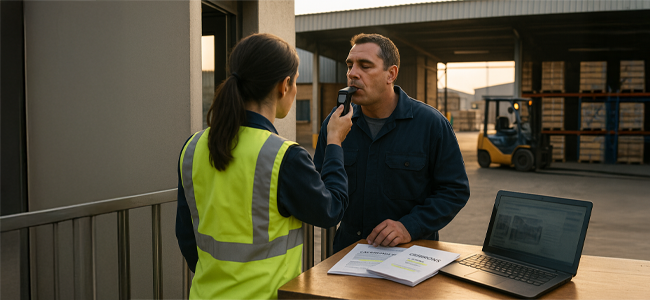“There is no sound more peaceful than rain on the roof, if you’re safe asleep in someone else’s house.” (Anne Tyler)
You move into your new dream home, excited and happy. Until it rains, and the roof leaks. As the repair teams tramp around on your roof and the bills start piling up whilst you weave around buckets and tarpaulins and sodden carpets, you go back to the seller and demand recompense.
“Sorry”, says the seller, “read the sale agreement. I sold the property “voetstoots” and without liability for any defects. I sympathise, but it’s actually your problem not mine. Good luck, and goodbye.”
Can that be correct? Let’s address that question with reference to a recent Supreme Court of Appeal (SCA) decision over a flooded-out guest house.
A leaking roof puts a real damper on a guest house dream
- A couple bought a guest house for R1.3m to fulfil their dream of running one.
- Barely three months after they moved in, heavy rain caused extensive leaking of the entire roof. The guesthouse was flooded and furniture, carpets, linen and luggage soaked. Guests were, unsurprisingly, unhappy.
- The buyers had to take out a loan to cover the repair costs, plus they lost 2 months’ income during the repairs.
- They successfully sued the seller for a total of R240k in damages (a combination of repair costs and lost income), an award confirmed by the High Court and then by the SCA on appeal.
To understand that outcome, let’s take a look at our law’s requirements for such a claim to succeed.
Fraudulent non-disclosure of latent defects – 3 things you must prove
As a buyer claiming damages on the basis of “fraudulent non-disclosure in respect of latent defects” (we deal with the alternative of an “implied warranty” claim below), you will, as the Court set it out, have to prove that –
- The seller was, at the time of the sale, aware of the “latent” defects (defects that “would not have been visible or discoverable upon inspection by the ordinary purchaser”), and
- The seller deliberately failed to disclose those defects to you, and
- The seller’s aim was to induce you to conclude the sale.
The buyers in this case had, before buying, noticed water staining in several places. The seller had assured them that although he knew of one roof leak, it had been fixed by his handyman and that he didn’t believe leaks would reoccur.
The Court however preferred the conclusion by an expert witness (a civil engineer) that “any claim by the previous owner that no problems with roof leaks were experienced in the past [would] simply be impossible and untruthful”. The roof, said the engineer, was defective both in respect of inferior design (“the entire roof speaks of negligent design, inferior workmanship and bad maintenance”) and inferior workmanship (“it is evident that [the builder] of the roof was not a skilled artisan … the roof under investigation was prone to leak from the day that it was built.” The engineer also found evidence of past efforts to seal the roof and believed that the problem had escalated over time.
The Court’s conclusion – the seller had fraudulently misrepresented the true condition of the roof and had failed to disclose it to the buyers. “On the probabilities, the only reasonable inference to be drawn …. is that the non-disclosures and misrepresentation were made deliberately in order to induce the sale of the guesthouse, and this constituted fraud.” Hence its confirmation of the damages award to the buyers.
Another way to claim: Breach of the “implied warranty”
The buyer in this case sued on the basis of “delictual liability” which requires you to prove a list of factors, including both wrongfulness and fault. Fortunately, you also have an alternative avenue available to you. Our law is that a seller (of anything) automatically gives the buyer an “implied warranty” that the thing sold has no latent defects. Prove that the seller has breached that warranty and you have the basis of a claim.
You are very likely, however, to come up against the seller protections in a voetstoots clause (common in sale agreements). That clause transfers the risk of latent defects to the buyer by providing that the property is sold “as is” and without any warranty.
To defeat the seller’s protection under voetstoots you can either –
- Prove fraud by the seller. To be protected, the seller must have been genuinely unaware of the latent defect in question at the date of sale; or
- You can show that the protections in the CPA (Consumer Protection Act) apply to your sale. The CPA, where it applies, protects buyers from defective or not-fit-for-purpose goods, regardless of what the sale agreement says. There are grey areas here, so specific legal advice is indispensable, but in broad terms the CPA does not protect larger “juristic person” buyers (those with an annual turnover of R2m or more), nor will it generally cover one-off “private” sales between individuals – normally it is developers, estate agents and others acting “in the ordinary course of business” who will be bound by the CPA.
Sellers: Disclose all possible defects of which you are aware in the “mandatory disclosure form” which, since February 2022, must be attached to and form part of the sale agreement.
Buyers: Inspect the property thoroughly before putting pen to paper – you cannot complain about any patent (“obvious on reasonable inspection”) defects that you should have seen yourself. To cover yourself against any latent defects, get expert reports in any doubt.
Disclaimer: The information provided herein should not be used or relied on as professional advice. No liability can be accepted for any errors or omissions nor for any loss or damage arising from reliance upon any information herein. Always contact your professional adviser for specific and detailed advice.
© LawDotNews



